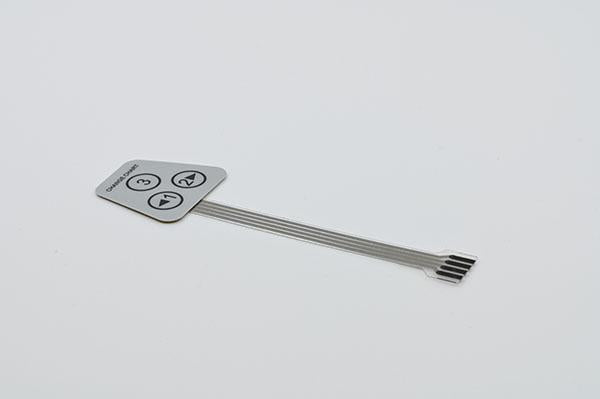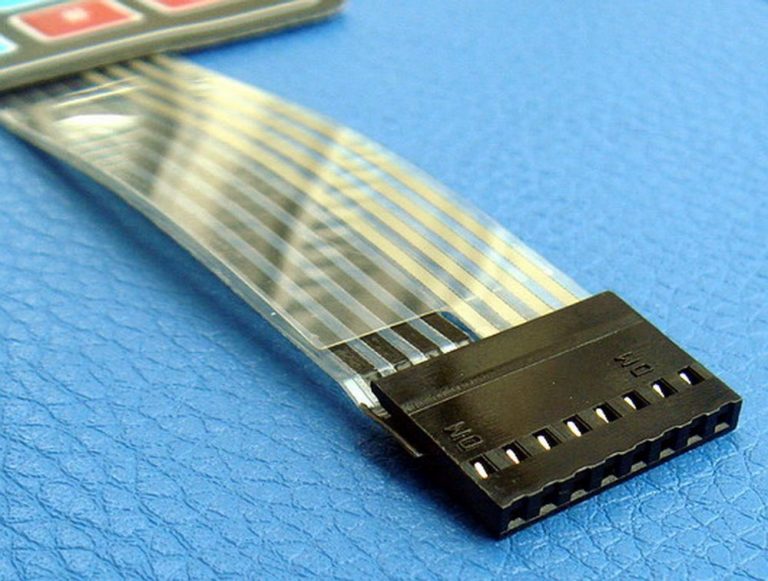Ensuring Quality and Longevity with Membrane Switches in Electronics
Ensuring Quality and Longevity with Membrane Switches in Electronics
Blog Article
Understanding the Relevance of Membrane Switches in Interface
Membrane switches are important parts in the design of efficient individual interfaces, promoting not only performance yet additionally enhancing aesthetic appeal and individual communication. As we check out the future trends and different benefits associated with Membrane modern technology, it becomes clear that these buttons are more than simply components; they represent a convergence of advancement and usefulness.
What Are Membrane Buttons?

The spacer layer, which contains glue properties, enables the splitting up of the circuit layer from the overlay, making certain that the button stays in a non-activated state up until pressed. When stress is used to the overlay, it compresses the spacer layer, bridging the gap and completing the circuit in the underlying layer. This style not just lowers the physical area required for conventional mechanical buttons yet likewise enhances the durability of the device, as Membrane switches are generally immune to dust, moisture, and various other environmental factors.
Generally discovered in applications ranging from customer electronic devices to medical tools, Membrane buttons are important to modern innovation, offering a efficient and straightforward interface that straightens with contemporary layout demands.
Benefits of Membrane Buttons
While various switch technologies exist, Membrane Switches deal unique advantages that make them especially preferable in different applications. Among the primary advantages of Membrane switches is their portable design, which enables space-saving applications in tools where realty is restricted. Their thin profile not just enhances visual allure however additionally helps with light-weight construction.
One more substantial advantage is their resistance to environmental variables. Membrane switches are commonly sealed versus wetness, dirt, and impurities, making them perfect for usage sought after environments, such as medical gadgets and commercial tools. This sturdiness expands the life-span of the switch, decreasing upkeep prices and boosting reliability.
Furthermore, Membrane switches can be personalized to fulfill specific design requirements, integrating special graphics and shades that boost customer communication. Their tactile comments alternatives can also be tailored to provide a satisfying user experience. Additionally, Membrane switches are affordable, especially in high-volume applications, as they can be created efficiently.
Applications in Different Industries
In the consumer electronics industry, Membrane switches prevail in gadgets such as microwaves, washing equipments, and remotes. Their tactile feedback and visual choices improve individual experience while offering a smooth, contemporary look. In addition, automobile manufacturers make use of Membrane buttons in dashboard controls and infomercial systems, where area is limited, and user engagement is crucial.
Moreover, the commercial industry leverages Membrane switches in control panels for machinery and equipment, permitting intuitive procedure in frequently rough environments. Their resistance to chemicals important link and dampness guarantees long life and reliability in these applications. On the whole, the adaptability of Membrane Switches adds significantly to their extensive usage, making them vital in different technological domain names.
Design Considerations for Membrane Buttons

When creating Membrane buttons, several essential factors to consider must be taken into consideration to ensure optimum functionality and customer experience. The choice of materials is crucial; choosing long lasting, top notch substratums can boost the button's long life and resistance to ecological variables such as dampness and temperature level variations.
Second of all, the style of the graphic overlay ought to prioritize clearness and ease of use. Icons and message need to be legible, and the layout must assist in user-friendly interaction (membrane switches). Furthermore, responsive responses is important; including a tactile dome or various other mechanisms can enhance the user experience by giving physical verification of activation
Another essential aspect is the button's electric efficiency. Designers should ensure that the conductive traces are properly made to lessen resistance and prevent signal interference. This entails examining the needed actuation pressure and making certain compatibility with the electronic components they will certainly interface with.

Future Fads in Membrane Modern Technology
As innovation continues to development, Membrane buttons are poised to progress considerably, driven by technologies in materials and making methods. One arising trend is the unification of advanced products, such as adaptable substrates and conductive inks, which boost resilience and lower the overall weight of Membrane buttons. These materials not just boost the tactile action but likewise permit for the design of switches that can hold up against harsher environmental problems.
Additionally, the assimilation of touch-sensitive technologies is transforming standard Membrane Switches into Continue more interactive interface. Capacitive touch sensing units embedded within Membrane switch panels can supply an extra user-friendly and receptive customer experience, aligning with the expanding demand for smooth, modern-day layouts in consumer electronics.
Furthermore, improvements in printing strategies, such as electronic and 3D printing, enable rapid prototyping and personalization of Membrane buttons. This versatility permits makers to respond faster to market demands and consumer preferences.
Finally, sustainability is ending up being a considerable emphasis, with makers discovering green products and procedures. As these fads unravel, the future of Membrane modern technology assures improved functionality, visual allure, and ecological duty, strengthening their function in sophisticated interface across various industries.
Conclusion
In conclusion, Membrane Switches represent an important component in the layout of customer interfaces, integrating performance with aesthetic flexibility. Their benefits, consisting of toughness and resistance to environmental aspects, make them ideal for varied applications throughout different markets. Furthermore, thoughtful layout factors to consider improve user communication and experience. As innovations in innovation continue, the advancement of Membrane buttons is anticipated to further improve individual interfaces, driving innovation and boosting functionality in an increasingly intricate technological landscape.
Membrane switches are important components in the style of reliable customer interfaces, promoting not just capability but also improving visual allure and individual interaction.Membrane Switches offer as an important part in various individual interfaces, facilitating a seamless interaction in between individuals and digital tools.While numerous switch innovations exist, Membrane Switches deal distinct advantages that make them especially preferable in numerous applications.Moreover, Membrane switches can be customized to fulfill specific design demands, integrating one-of-a-kind graphics and shades that enhance user interaction.In final thought, Membrane Switches represent a crucial element in the style of customer interfaces, incorporating capability with aesthetic flexibility.
Report this page